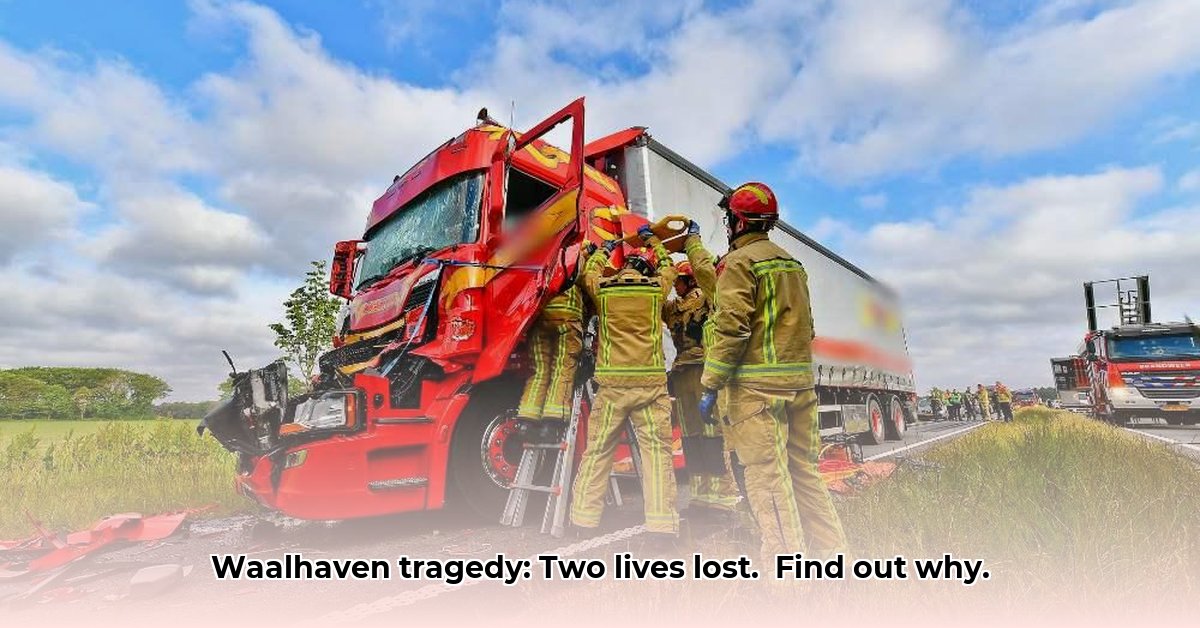
Understanding the Waalhaven Tragedy: A Critical Incident Report
The recent double fatality at Rotterdam's Waalhaven port during a steel plate unloading operation has shocked the maritime industry. This critical incident report aims to summarise the known facts, analyse potential contributing factors, and propose actionable recommendations to prevent future tragedies. While a full investigation by the Arbeidsinspectie (Labour Inspectorate) is underway, preliminary findings highlight urgent concerns regarding safety protocols and risk management.
The incident, which resulted in two deaths and several serious injuries, underscores the inherent dangers associated with handling heavy cargo. The immediate need is to prevent similar incidents, followed by a comprehensive review to address systemic issues.
Pivotal Points:
- Two workers died and several were seriously injured while unloading steel plates at the Waalhaven.
- The exact sequence of events is still under investigation by the Arbeidsinspectie.
- Immediate actions, including safety stand-downs and internal audits are crucial alongside long-term systemic changes.
Immediate Action Plan: Mitigating Further Risk
While the full investigation is ongoing, several immediate steps are crucial to mitigate further risks:
Safety Stand-Down: All similar steel plate unloading operations should be immediately suspended until a comprehensive safety review is completed. (This pause allows for a thorough assessment of safety protocols.)
Internal Audits: Companies involved must conduct thorough internal audits of their safety procedures, equipment maintenance, and worker training programs. (Identifying weaknesses within current operational systems.)
Enhanced Worker Training: Refresher training should focus on identifying hazards, managing risks associated with steel plate handling, and practicing emergency response protocols. (Ensuring optimal competency in safe operation.)
Comprehensive Risk Assessments: Each step in the steel plate unloading process requires a detailed risk assessment, identifying potential hazards and outlining corresponding mitigation strategies. (A proactive, multi-layered approach to risk identification and reduction.)
These are immediate, short-term actions. However, lasting change requires a more comprehensive long-term strategy, and the work done now lays the ground for that change.
Long-Term Solutions: Building a Safer Maritime Industry
Addressing the root causes of this tragedy requires a multi-faceted, long-term approach focusing on systemic improvement and technological advancements:
Technological Upgrades: Investing in automated equipment and advanced monitoring systems, such as load sensors (systems which monitor weight and stability) and automated securing mechanisms, can significantly reduce the risk of human error. (Reducing human intervention in high-risk areas.)
Improved Reporting Systems: Implementing a robust, accessible system for reporting near-miss incidents, potential hazards, and safety concerns is crucial for data-driven improvements. (Creating a feedback loop to proactively identify and address emerging hazards.)
International Best Practices: Full adherence to and exceedance of the applicable international safety standards (such as ISO 45001) is mandatory. (Following globally-recognised health and safety guidelines.)
Enhanced Collaboration: Open communication and collaboration between port authorities, shipping companies, labour unions, and the Arbeidsinspectie are essential for a holistic approach to maritime safety. (Creating an environment where shared responsibility and collective action are prioritised.)
Isn't prioritising worker safety fundamental to a productive and ethical maritime industry? The cost of inaction is immeasurable.
Shared Responsibility: A Collaborative Framework
The responsibility for improving workplace safety in the maritime sector is shared. The table below summarises the short-term and long-term responsibilities of key stakeholders:
| Stakeholder | Short-Term Actions | Long-Term Actions |
|---|---|---|
| Maritime Companies | Immediate safety stand-downs, internal audits, worker retraining, risk assessments | Implementation of a robust Safety Management System (SMS), investment in advanced technology, transparent incident reporting systems |
| Arbeidsinspectie | Full investigation, transparent reporting of findings, review of existing regulations | Development of targeted training programs, data-driven safety improvements, collaboration with all stakeholders |
| Government | Allocation of resources to safety initiatives, review & strengthening of regulations | Investment in research & development, fostering a strong safety culture, clear and effective inter-stakeholder communication |
| Worker Unions/Representatives | Advocacy for improved safety, training, equipment; pushing for independent audits | Collaboration with employers, promoting open communication channels between workers & management |
Preliminary Risk Assessment: Areas for Immediate Attention
This preliminary risk assessment, pending the Arbeidsinspectie’s full report, identifies potential contributing factors:
| Risk Factor | Likelihood | Severity |
|---|---|---|
| Inadequate securing of steel plates | Very High | Catastrophic |
| Insufficient worker training | High | Catastrophic |
| Equipment malfunction | Moderate | Severe |
| Poor Communication | High | Moderate |
We must use this tragedy as a catalyst for meaningful change. The lives lost demand it. Only through collaborative efforts and a commitment to robust safety protocols can we prevent such incidents from occurring again. The time for action is now.